The day that Donald Trump met Kim Jong-un
First meeting between sitting US and North Korean leaders, Singapore, 2018: The most remarkable thing about the event was that it happened at all, writes Andrew Buncombe

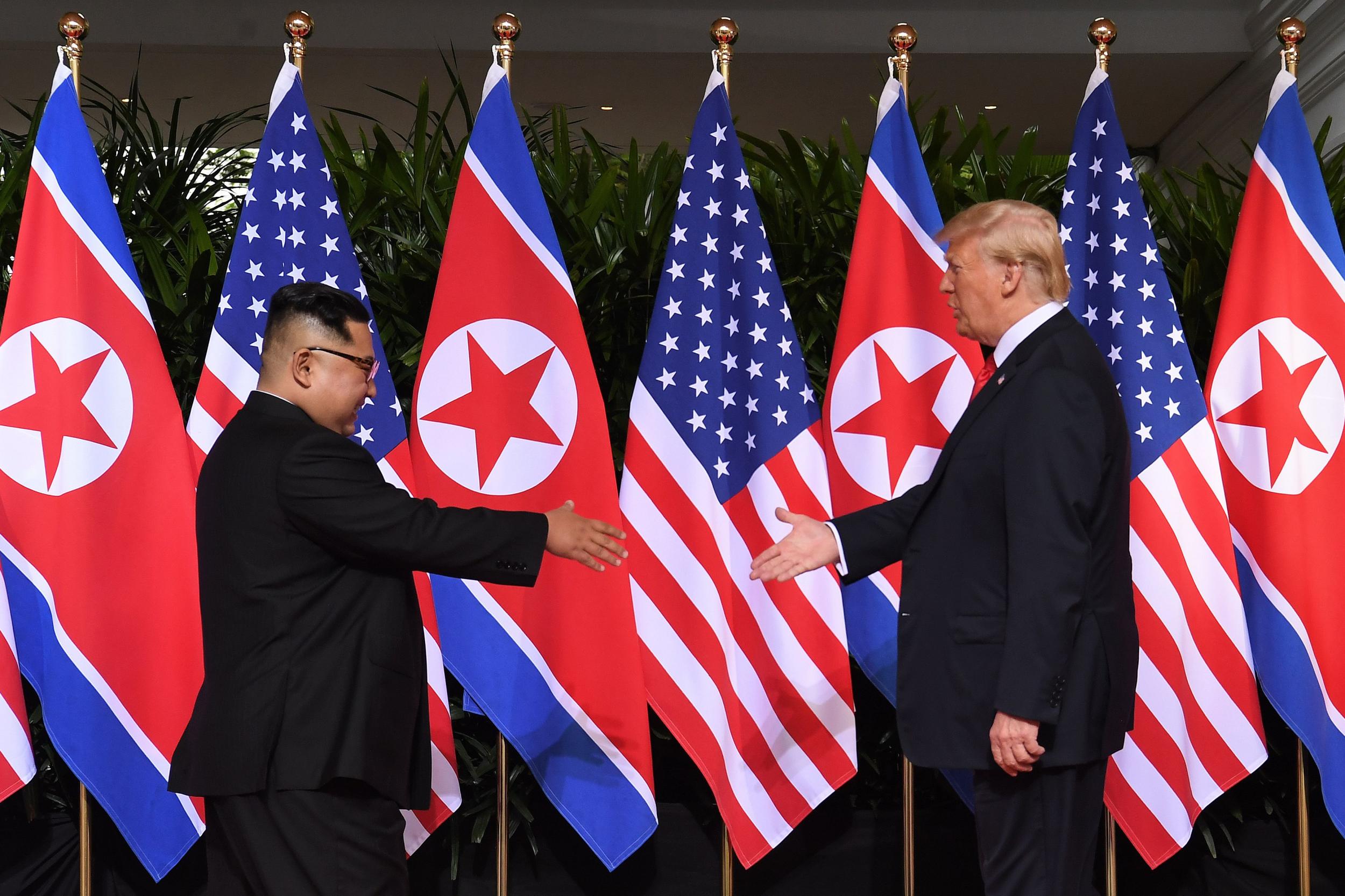
The thing everyone noticed was not simply the greeting, but how long it lasted.
Pacing towards each other on a veranda of Singapore’s Capella Hotel, the two leaders reached out their right hands and began shaking. The US president then placed his left hand on the younger man’s arm, while they continued to pump and smile. Go back and watch: the stopwatch suggests that handshaking lasted a full 12 seconds.
And how much was that handshake worth? Perhaps an awful lot.
We know Donald Trump can be a showboater, who loves nothing more than being talked about around the word. We know too, of his penchant for authoritarian leaders and dictators, and apparent disdain for the US’s allies.
But the handshake secured that June morning, with the humidity enough to paste one’s shirt flat on one’s back, had no obvious precedent. A sitting US president had never met with one of the three men, members of the same family, who had ruled North Korea, since its de facto creation at the end of the Second World War.
“I feel really great. It’s gonna be a great discussion and I think tremendous success,” Trump told reporters, when the two men sat down, and he briefly flashed Kim Jong-un a thumbs up. Kim replied: “The past has placed many obstacles in our way but we overcame all of them and we are here today.”
The two men were in many ways a style in contrasts. They met two days before Trump’s 72nd birthday; Kim was just 33. The American leader loomed tall over the younger man. The North Koreans had to borrow a plane from China, such was the concern about the ability of their own aircraft to fly there safely. Trump told Kim North Korea could have a bright, successful future, and appeared not to mention its appalling record on human rights.
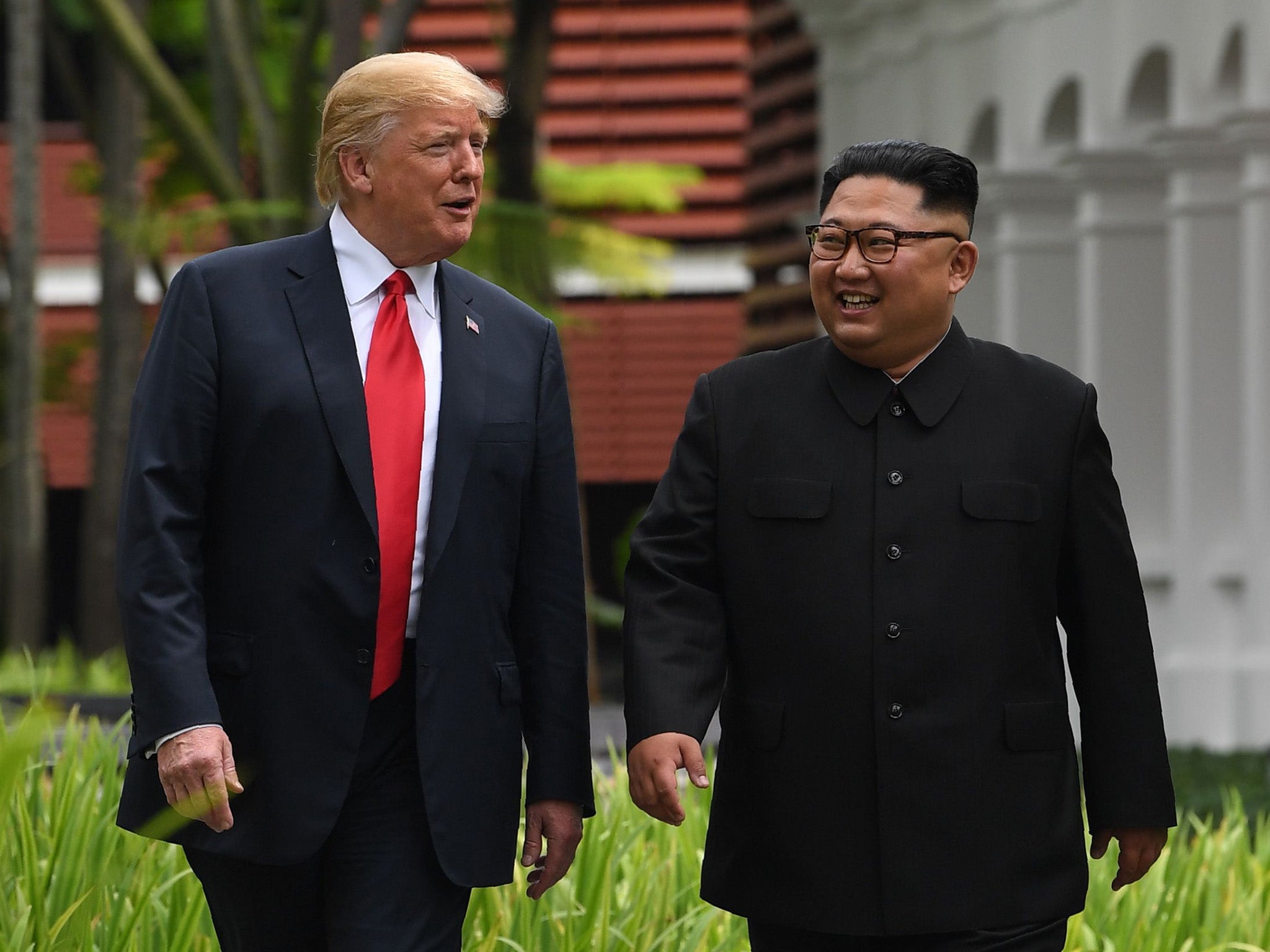
The most remarkable thing about the summit, though, was simply that it happened. Months earlier, in his inaugural address to the UN General Assembly, Trump had threatened Pyongyang with “total destruction”. North Korea, speeding up its testing to effectively make it a nuclear-armed nation, with a delivery system of questionable efficiency, called Trump a “dotard”. Trump referred to Kim as “rocket man”.
In one of the most telling insights into the nature of the mounting tension, in January 2018 residents of Hawaii, told by error they were under attack from a ballistic missile, rushed for cover, thinking North Korea had made good on its threats to attack Guam or a US state.
Then came the Winter Olympics, held in South Korea, in which President Moon Jae-in hosted Kim’s sister, Kim Yo-jong. The outreach would lead to the two nations’ own summit in April, which in turn smoothed the way for a Trump-Kim meeting.
In the run-up to the summit, there was much uncertainty about both the time and place, and whether it would go ahead. The Americans were apparently fearful of a no-show from Kim, which would have been a humiliation. In May, Trump cancelled the plan, saying North Korea was not serious.
As it was, Trump would subsequently reconsider then announced the time and place on Twitter – Singapore, June 12. He added: “We will both try to make it a very special moment for World Peace!”

I arrived in the city state on the evening on Sunday June, having flown 20 hours from New York, with a disorientating, body clock-slamming change of planes in Hong Kong. By good chance, the flight touched down at Changi, just moments before Air Force One landed at Paya Lebar Air Force Base.
I hopped in a taxi and urged the driver to head for Trump’s hotel, the Shangri-La, arriving just in time to interview some excited local residents, and livestream the action as his motorcade swept past.
In many ways, Singapore was an ideal location. Having a friendly relationship with the US, but also used to being a playground for wealthy Asian despots, the authorities in Singapore were able to lock down security, and provide first-class facilities for the media, at least 3,000 of whom arrived.
They also went out of the way to provide a delicious array of location and regional dishes, while Singaporeans talked of their pleasure in playing host to history.
On that Tuesday morning, the vast majority of the media was set up in buildings attached to the Grand Prix circuit. There were dozens of huge screens, beaming events from Sentosa, one of the Singapore’s 62 offshore islands, where Trump and Kim were meeting at the Capella.
Along with the handshakes, the two leaders also appeared for the cameras to sign a document vowing to work towards denuclearisation of the Korean peninsula. Trump said he would “absolutely” invite Kim to the White House, while the North Korean leader said he would certainly accept.
“We’re very proud of what took place today,” said Trump. “We have developed a very special bond.”
That evening, our stories having been filed, myself and some friends wandered out onto the warm surface of the race track, closed off and safe, and posed for selfies near the starting line.
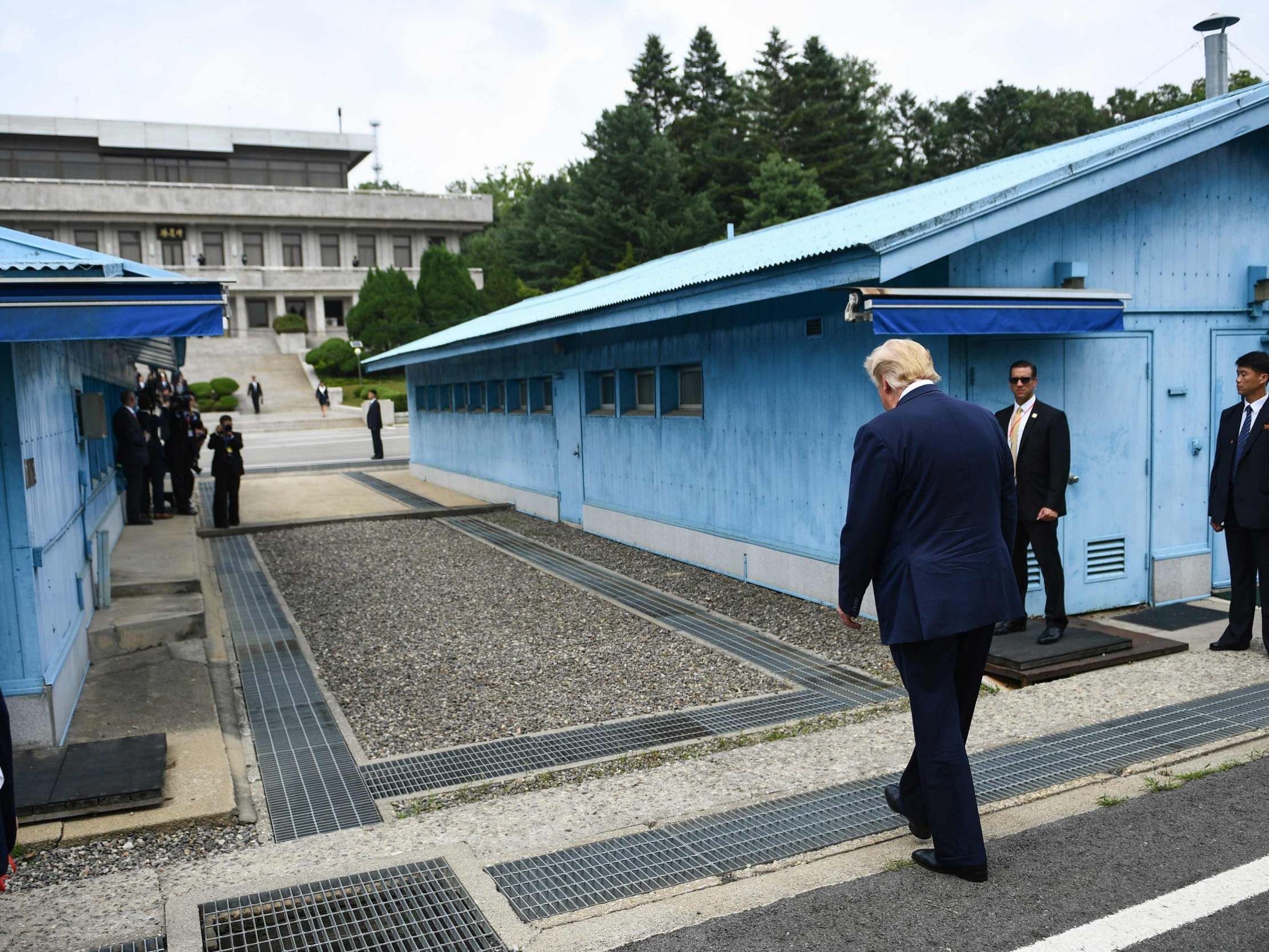
Few bought into Trump’s claim that the document the leaders signed was “very comprehensive”. In truth, it was no more than an undertaking to work for better relations.
Many experts believed Trump had handed Kim the massive propaganda coup of international acceptance, while coming away with little very solid. Others pointed out Pyongyang was not abiding by its agreement to dismantle key production sites.
How far the two nations were apart on the move towards denunclearation, and what that term even meant, would be underscored by the abrupt failure of their second meeting, held in Hanoi in February 2019. The two sides walked away after spending barely minutes talking to each other, such was the gulf in their agreement.
Then in June of this year, there was a third meeting, more startling than either of the two previous. Trump, in Japan for the G20 summit in Osaka, tweeted that he would like to meet Kim on the demilitarized zone, or DMZ, a strip of land that has for decades been a buffer between the two heavily armed militaries of North and South Korea.
Hours later, Trump arrived at the DMZ and was seen entering into North Korea, another first, where he had more handshakes with Kim, the pair of them beaming and heaping praise on each other.
“We want to bring an end to our unpleasant past and bring in a new future, so this is a very courageous and determined act,” said Kim. “This handshake of peace itself serves to demonstrate that today is different from yesterday.”
History has been made. The seemingly impossible has played out before the eyes of the world
Andrew Buncombe, 12 June 2018
In a luxury hotel on an island off the coast of Singapore, Donald Trump and Kim Jong-un concluded a lengthy, apparently warm summit that the US president said had gone “better anybody could have expected”.
In scenes that were little short of stunning, Mr Trump and Mr Kim, who just months ago appeared to be pushing the Korean peninsula towards the prospect of conflict, shook hands, strolled together and spoke of the weight and responsibility their encounter bore with it. Mr Trump gave the dictator a brief but unmistakable thumbs-up.
“[It is] going great,” Mr Trump told reporters, after completing the best of four hours of contact, including a working lunch on the Singaporean island of Sentosa.
He added: “A really fantastic meeting. A lot of progress. Really very positive. I think better than anybody could have expected. Top of the line. Really good.”
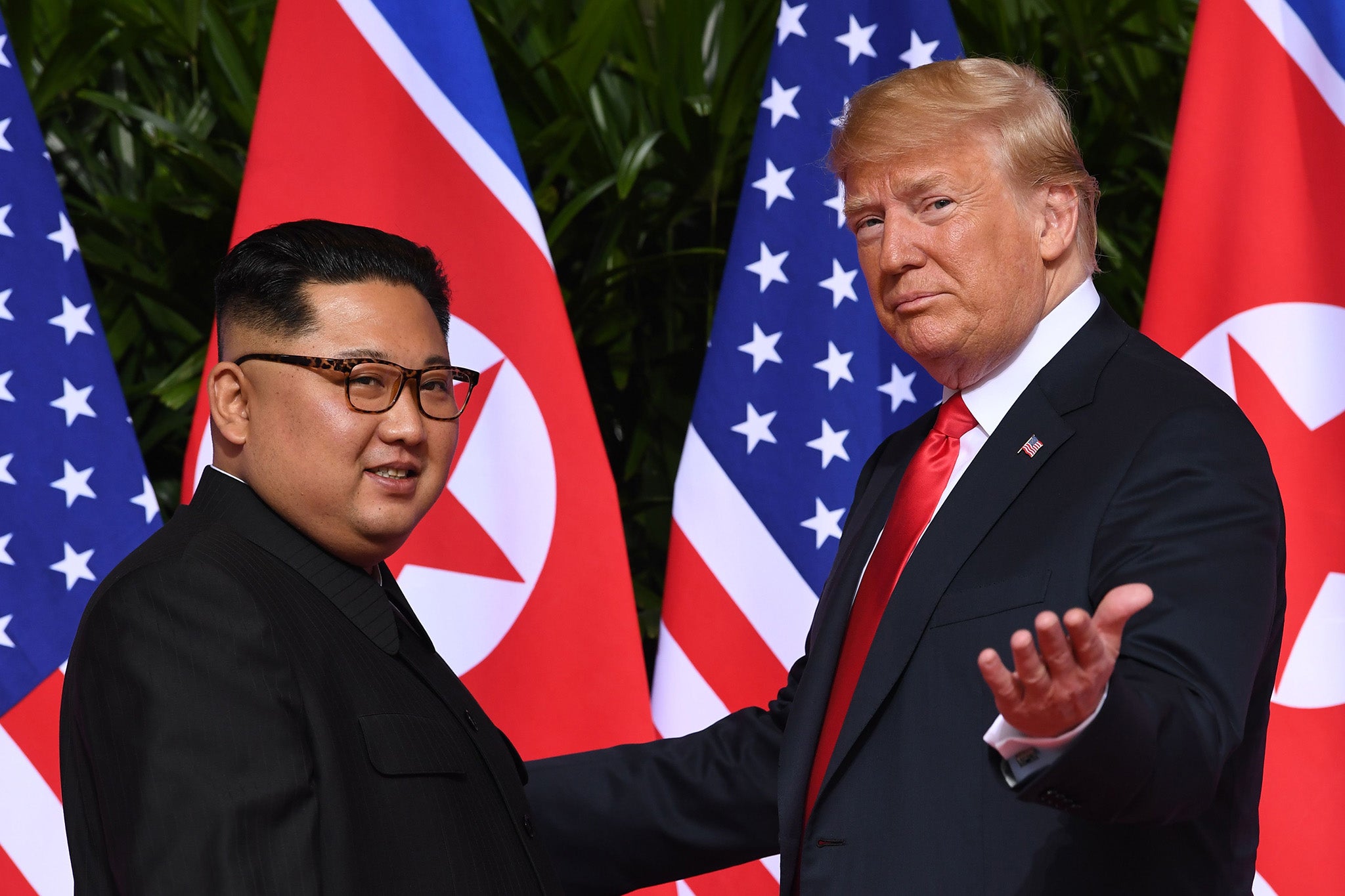
It may be that Tuesday’s meeting transpires to have been nothing more than a dramatic photo-opportunity for the North Korean leader. Yet it could be the day that results in establishing the most significant geopolitical shift in relations between the US and an Asian nation since Richard Nixon visited China in 1972.
That day began, with the two men shaking hands outside the Capella hotel. The Associated Press said their handshake lasted 13 seconds; others said it was 10. Either way, it was long and seemingly warm, and was followed by another set of smiles for the cameras, before the two men, alone with their translators, talked for 45 minutes.
In an assessment that may have global ramifications, Mr Trump said he had forged “good relationship” with the man 37 years younger than himself, and the ruler of a nation with an appalling human rights record.
After initial exchanges lasting around 40 minutes, Mr Trump and Mr Kim emerged, walking side-by-side through the colonnaded hotel before entering a meeting room, where they were joined by their most senior officials. Mr Kim was heard telling the US president through a translator: “I think the entire world is watching this moment. Many people in the world will think of this as a scene from a fantasy ... science fiction movie.”
Asked by a reporter how the meeting was going, Mr Trump said: “Very good. Very, very good. Good relationship.“
Mr Kim also sounded positive about the prospects.
“We overcame all kinds of scepticism and speculations about this summit and I believe that this is good for the peace,” he said. “I believe this is a good prelude for peace.”
The US leader was joined by secretary of state Mike Pompeo, national security adviser John Bolton, and John Kelly, White House chief of staff, for the expanded talks, while Kim’s team included former military intelligence chief Kim Yong-chol, foreign minister Ri Yong-ho and Ri Su-yong, vice chair of the ruling Workers’ Party.
After the meetings, the two teams and other senior officials met for a working lunch, where beef short ribs, sweet and sour pork and “daegu jormin”, or Korean braised cod, were served for the main course, according to the menu.
That was to be followed by dark chocolate tarts, pastries and vanilla ice cream for dessert. The North Korean leader’s sister and close confidante, Kim Yo-jong, was among the lunch party, Reuters noted.
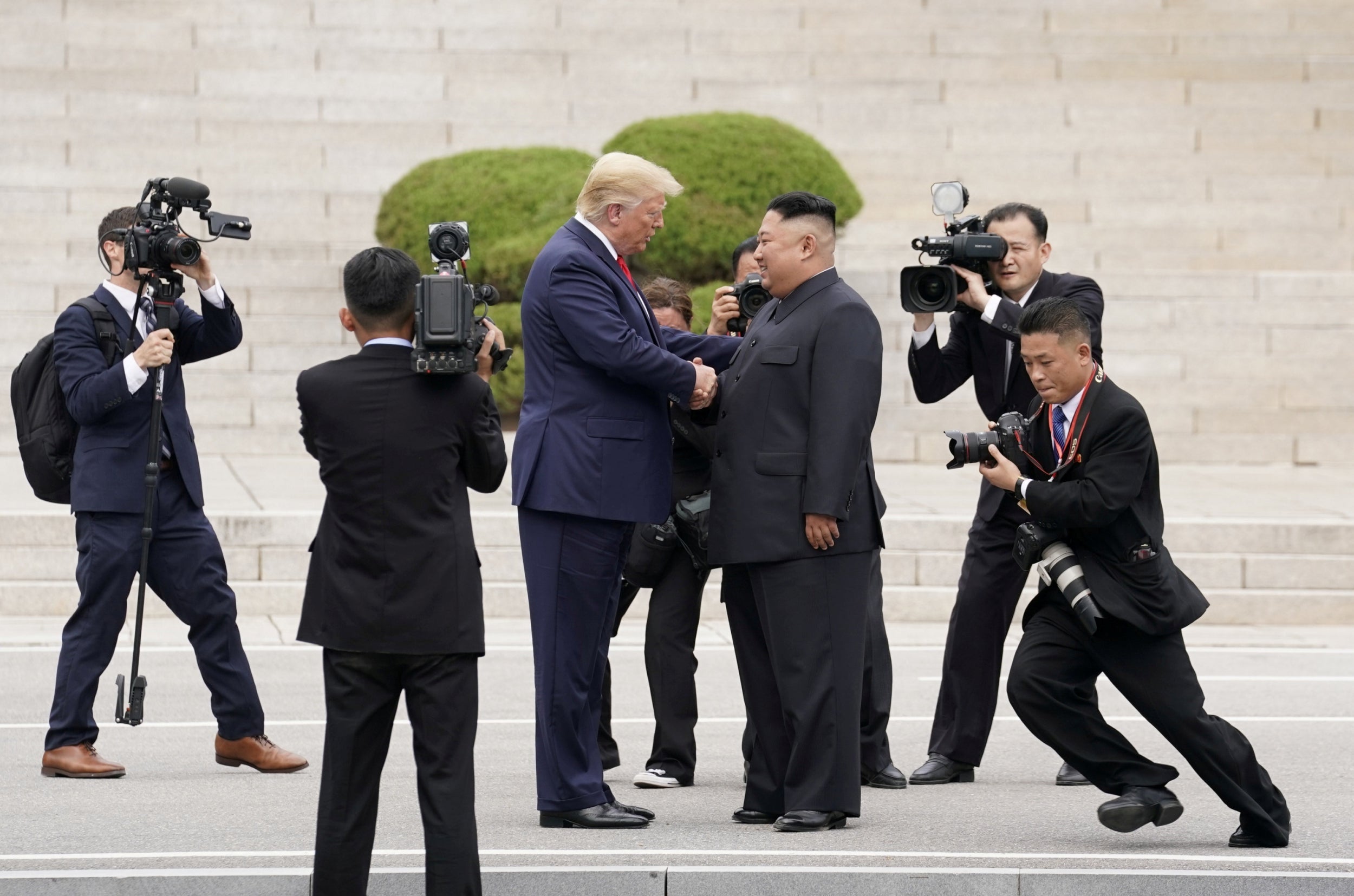
As the cameras captured the moment, Mr Trump said: “Very nice. Getting a good picture everyone, so we all look nice and handsome and thin… perfect.”
Ager they finished their working lunch, the two men appeared for the cameras to sign a document. A senior US official said it would underscore the progress they have made that day between the two historic foes.
Mr Kim is due to leave on Tuesday afternoon, a source involved in the planning of his visit has said. Meanwhile, the White House said said that Mr Trump was leaving Singapore early because negotiations had moved “more quickly than expected”.
The unfolding summit was a remarkable change in dynamics from less than a year ago, when Mr Trump was threatening “fire and fury” against Kim, who in turn scorned the American president as a “mentally deranged US dotard”.
Join our commenting forum
Join thought-provoking conversations, follow other Independent readers and see their replies
Comments